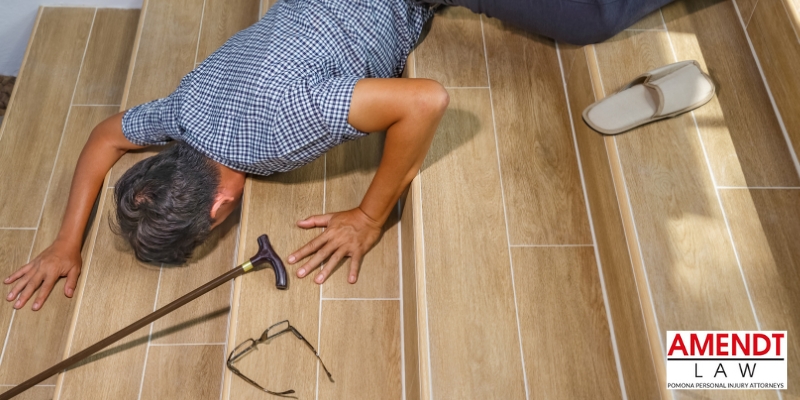Call Us : (909)-766-1994
Pomona Staircase Accident Lawyer
Pomona Staircase Accident Attorney
Stairs in commercial and public buildings must be built to exact specifications that meet city or county building codes. Falling short of those specifications creates unnecessary risk for those who use the stairs.

Improper Stair Height Or Depth
The vertical riser and the horizontal run that make up stairs must fall within specific maximum and minimum measurements. Upon completion of the stairs, it is up to the builders to measure the stair step height and depth to ensure adherence to the rules and, more importantly, the safety of their patrons.
Building codes also prescribe the maximum variance or difference permitted in the height or depth of any one step from another. Consistency of the steps is paramount. Falling short could have catastrophic results. When you take a step, your brain remembers the length and automatically relays that information to your legs for the next step.
When a foot comes down on a different place, the brain expects a fall could occur that results in serious injuries or death. We have decades of experience helping those injured in a slip and fall, liquid spills and uneven or hazardous pavement.
Improperly Measured Handrails
Building codes require handrails for certain types of stairs. If you fall on stairs that didn’t have a handrail and that lack of safety contributed to your fall, the owner is likely liable for your injuries. In addition, most building codes require that one or more stair handrails be of a certain width or height and that they be installed properly. Reaching for a handrail that is at the wrong height can cause you to fall even when nothing else is wrong with the stairs.
Hurt In A Staircase Accident? Call Our Pomona Staircase Accident Attorneys
For a free initial consultation with a Pomona faulty staircase accident lawyer, call The Law Offices of Christian J. Amendt at 909-766-1994 or contact us online.
Se habla español.


